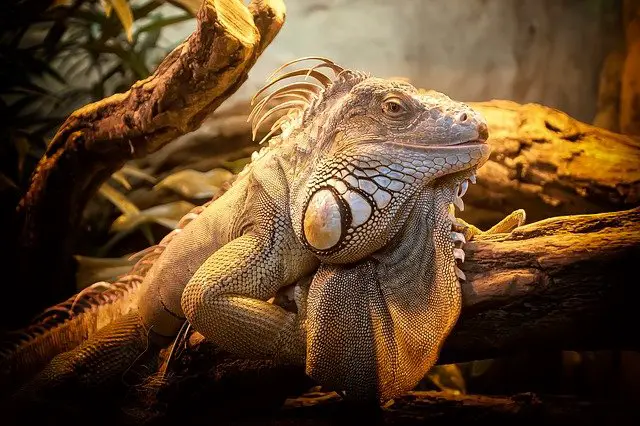Acrylic paint is one of the safest paint choices for reptile accessories. This type of paint is water-based and free of VOCs, so it can sit safely in a terrarium or vivarium for lengthy periods. You should not use any paint on the skin of your reptile.
There are several reasons to choose acrylic paint over other options for reptiles, and taking the time to apply the paint properly will keep the item safe over time. Read on as we explore the benefits of acrylic paint and how to use it safely.
Why Choose Acrylic Paint for Reptiles
Dangerous paints like VOC (Volatile Organic Compounds) paint and spray paints post many threats to your reptiles. They are bound to come into contact with these items as they spend most of their time in their vivarium, and the dangers increase if your reptiles use them for climbing and basking.
VOC paints release toxins over time, even after they are dry. The effects of these chemicals can be magnified by the increased temperature and humidity in an enclosure.
Other paints, like spray paints, may be more likely to chip off. Your unsuspecting reptile might snatch up these paint chips that are difficult to digest and toxic when consumed.
Acrylic paints are water-based and non-toxic. They adhere well to most surfaces, so chipping is not a common problem. If your reptile does eat up a bit of acrylic paint there is less likelihood for toxicity.
How to Use Acrylic Paint Safely for Reptiles
While acrylic paint is considered safe to use on reptile enclosures and accessories, you should follow certain safety steps to minimize risks. Adding anything into a vivarium, even store-bought items, can be a risk, so proceed with caution.
Make sure you work through these steps in a well-ventilated room. Working outside is ideal.
If that is not possible, paint any item in a room other than the one occupied by your reptile. Keep windows open as much as possible, even when you leave the product to dry, and be mindful of any fumes emitted during the process.
Priming
Using an acrylic primer can speed up the painting process and give you a more reliable paint job. While this step can be skipped, using an appropriate primer will make every surface water-resistant and increase the durability of the item.
Paint primer creates a tacky base for paint to adhere to, and primer can help you fill in any minute cracks or dips that might make covering the item difficult. It can also reduce the chances of the base item melting or the paint chipping away.
Painting
There are a few ways you can go about painting an item safely with acrylic paint, but you can also go in and paint it as you normally would. Make sure you cover the entire item and be prepared to pass over it with a few coats of paint.
Many reptile enthusiasts use a dry brushing technique to mimic the texture of rocks. You just need a clean cloth, a darker base coat, two lighter color paints, and a wide flat brush with 1-inch bristles.
Apply the dark color as a base coat. After that has dried, dip your brush into one of the lighter colors and get off as much paint as possible. Use that brush lightly across the item to highlight raised sections.
Once that section is dry, repeat with another light color.
Sealing
Make sure you give the paint ample time to dry before going in with a sealing agent. This means you should have about 24 to 48 hours between painting and sealing.
The sealant that you use needs to be just as non-toxic as the paint. Look for another product that is waterproof and non-toxic, such as mod podge.
While spray sealers exist and maybe easier, they should be avoided. If you are working with foam and the surface is not entirely covered then the spray can eat away at the foam. It is also unlikely that a spray sealant will be free of VOCs.
Paint the sealant to cover the entire item. You can work with multiple thin layers to increase coverage, further preventing chips and damage over time.
Drying
To completely dry your acrylic painted item, you should leave it in a well-ventilated space for at least two weeks. This may seem excessive, but this allows ample time for complete drying and ridding the item of any irritating fumes.
You can also try the fingernail test to check for complete drying. If you press the tip of your nail into the paint and it does not leave an indentation then the paint and sealant should be completely dry.
Maintaining Acrylic Painted Reptile Accessories
As long as you properly cover the item there should not be much worn and tear on the item. A waterproof sealant will make it much easier to wipe items down and clean up any messes made on the painted items.
Make sure you are handling any issues as they arise to improve the longevity of the product. Take note of excessive chips or worn areas.
Otherwise, these items should last at least a few years in between paintings. As long as it is not broken at this time, you can repaint using the same process and continue to keep acrylic painted items in your retile’s enclosure safely.
The Bottom Line
Acrylic paint is one of the most cost-effective and readily available paints that you can use safely around your reptiles. Take the time to use the proper painting method, and you can have unique painted items to improve the appearance of any enclosure.




